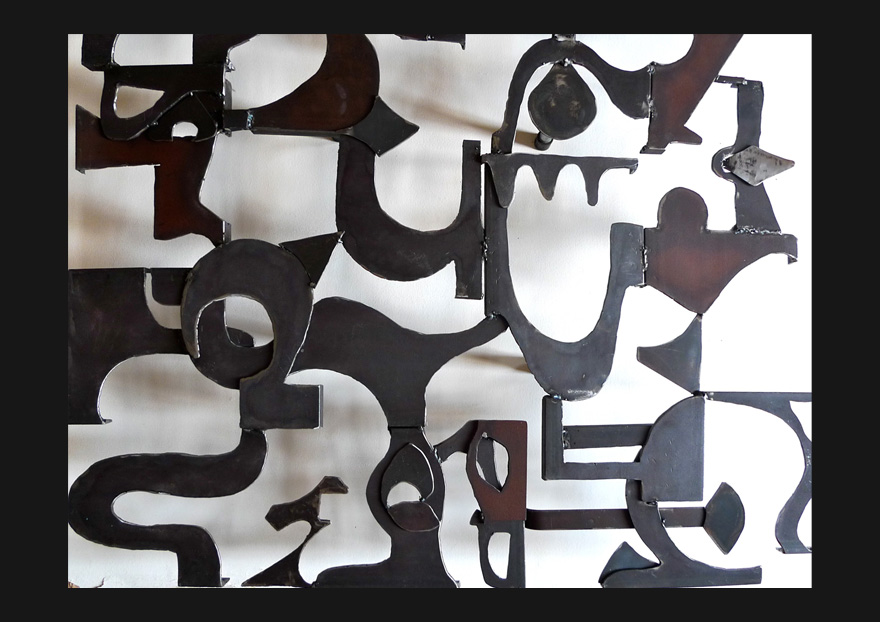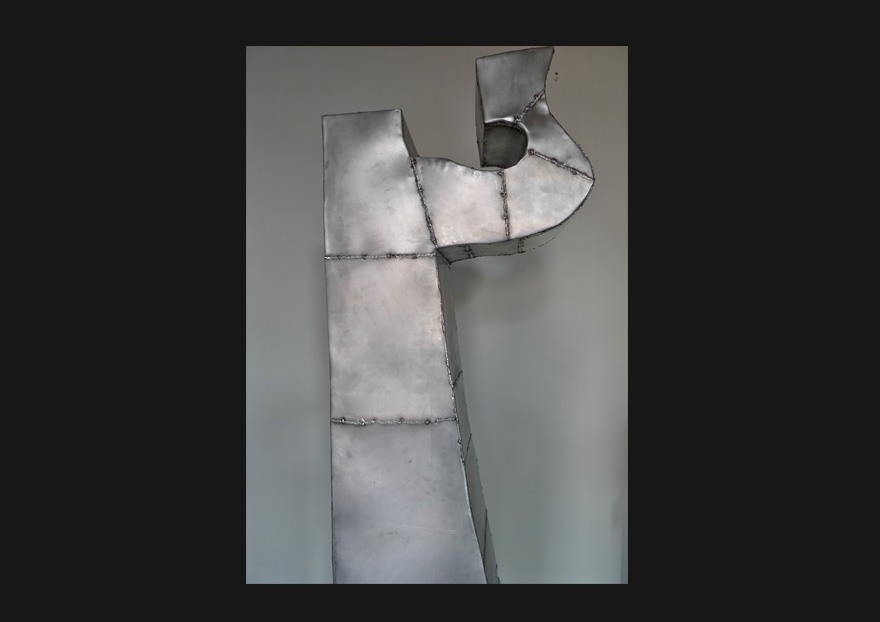

The New York artist Justin Peyser tackles the theme of exile and diaspora, considering them as interrelated elements not only as the typical problem of intolerance, but also as various aspects of phenomena of communication, circulation of ideas and as opportunities for meeting.
The project, “Diaspora,” curated by Francesca Pietracci, is composed of two distinct but parallel shows of sculpture entitled respectively, “Alla Deriva”—Adrift—and “Channels.” The first refers to a forced departure without certain destination and the second, a trip across physical and technological routes and communication channels.
1. “Alla Deriva” (“Adrift”)-- Museo Carlo Bilotti – Aranciera di Villa Borghese, Roma - 24 May / 8 September 2013
2. “Channels” – Emmeotto living gallery – Palazzo Taverna, Roma - 6 June / 7 September 2013
Conceived as an art exhibit within a migration, the large sculptures of Justin Peyser arrived in Italy via the sea, setting sail from the port of New York and crossing the peninsula, a succession of symbolic drifts and real arrivals.
Compared with the natural currents, this is about a reverse diaspora, an exodus from a richer country (USA) to a poorer one (ITALIA), from an journey triggered by cultural disorientation, by psychological unease, by a sense of not belonging, and by the necessity to reach other places in search of ancient roots and possible harmonies.
The two exhibits were realized at Ca’ Zenobio in Venice, the Maschio Angionio and the Palazzo delle Arti (PAN) both in Naples, at Museo all’Aperto Bilotti (MAB) and at the Palazzo dei Bruzi both of Cosenza and now will be opening in Rome, May 23rd “Alla Deriva (Adrift) at the the Museo Carlo Bilotti in Villa Borghese and on June 6th “Channels at the Emmeotto Gallery in Palazzo Taverna.
In each of these cities the artist and the works have notably interacted with the urban fabric and museums, but above all, they have created numerous and touching occasions for encounters with a multi-ethnic and heterogeneous public across the cultural, ideological and religious spectrum.
1. “Alla Deriva” (“Adrift”)-- Museo Carlo Bilotti – Aranciera di Villa Borghese - 24 May / 8 September 2013
In this exhibit, diaspora and drift are represented by the metaphor of a heart rending and lyrical dance. The sculptures composing this large installation symbolize mysterious and faceless personalities, realized in sheet metal and kept together heavy by welds left rough with the flame burns still visible, because as the artist declares, “going roaming in the diaspora leaves scars, just as their leaning to one side represents their hanging in the balance between two countries.
The sculptures represent pompous and desperate beings, ironic and appearing to sway. Placed in a circle, they make us think of a floating dance of castaways finding safe haven. Enthralling us from the grand terrace of the Museo Carlo Bilotti, looking from above over Villa Borghese, reminding passersby of the dance of life together with the symbolism of the journey.
Straddling sophisticated versions of post-modern and avant-pop --styles, the works of Justin Peyser present apparently discordant peculiarities, yet magically fuse: pain, loss, poetry, irony and elegance anchored in giving life a perfect melody, made of rhythm and lyricism, of repudiation and a sense of belonging. If there were a text able to interpose the look of the viewer and the work, it could only be the unforgettable song by Leonard Cohen (here in Rome for a super concert on July 7) entitled, Dance Me to the End of Love, inspired by the off beat motif of a string quartet of Jewish musicians [playing] at the threshold of a crematorium, but at the same time, a musical phrase of upmost sensuality.
2. Channels – Gallery Emmeotto – Palazzo Taverna – June 6/September 8, 2013
If exile and diaspora are themes that bring us close to pain and loss, the show Channels seems to exorcize the trouble and immerse the viewer into soothing fluidity. A musical reference is also needed for this group of works, calling to mind Brian Eno and the ambient cult tune, By This River, -- concepts that meander between oblivion and recollection, static and flowing from time perceived by the body and mind, in a dimension that transcends the present (inasmuch as it identifies with space) and connects the past with the future.
JUSTIN PEYSER


